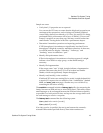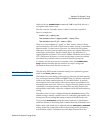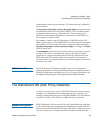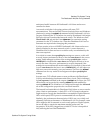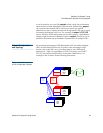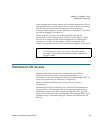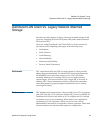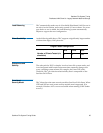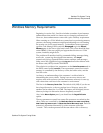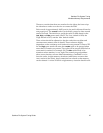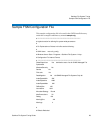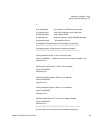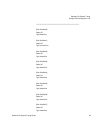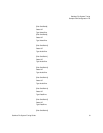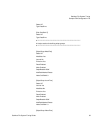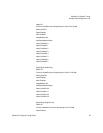
StorNext File System Tuning
Windows Memory Requirements
StorNext File System Tuning Guide 26
Windows Memory Requirements
Beginning in version 2.6.1, StorNext includes a number of performance
enhancements that enable it to better react to changing customer load.
However, these enhancements come with a price: memory requirement.
When running on a 32-bit Windows system that is experiencing memory
pressure, the tuning parameters might need adjusting to avoid running
the system out of non-paged memory. To determine current operation,
open the Task Manager and watch the Nonpaged tag in the Kernel
Memory pane in the lower right hand corner. This value should be kept
under 200MB. If the non-paged pool approaches this size on a 32-bit
system, instability might occur.
The problem will manifest itself by commands failing, messages being
sent to the system log about insufficient memory, the
fsmpm
mysteriously dying, repeated FSM reconnect attempts, and messages
being sent to the application log and
cvlog.txt about socket failures with
the status code (10555) which is ENOBUFS.
The solution is to adjust a few parameters on the
Cache Parameters tab in
the SNFS control panel (
cvntclnt). These parameters control how much
memory is consumed by the directory cache, the buffer cache, and the
local file cache.
As always, an understanding of the customers’ workload aids in
determining the correct values. Tuning is not an exact science, and
requires some trial-and-error (and the unfortunate reboots) to come up
with values that work best in the customer’s environment.
The first is the
Directory Cache Size. The default is 10 (MB). If you do not
have large directories, or do not perform lots of directory scans, this
number can be reduced to 1 or 2 MB. The impact will be slightly slower
directory lookups in directories that are frequently accessed.
Also, in the
Mount Option panel, you should set the Paged DirCache
option.
The next parameters control how many file structures are cached on the
client. These are controlled by the
Meta-data Cache low water mark, Meta-
data Cache
high water mark and Meta-data Cache Max water mark. Each file
structure is represented internally by a data structure called the
“cvnode.” The cvnode represents all the state about a file or directory.



